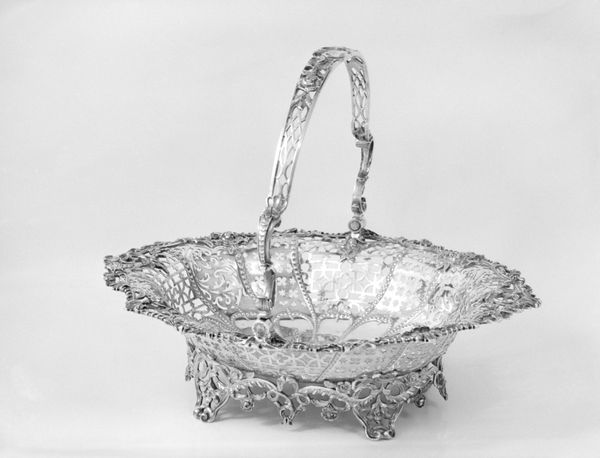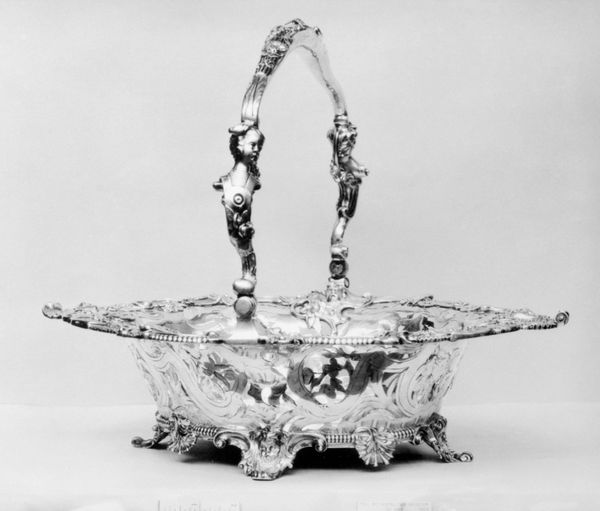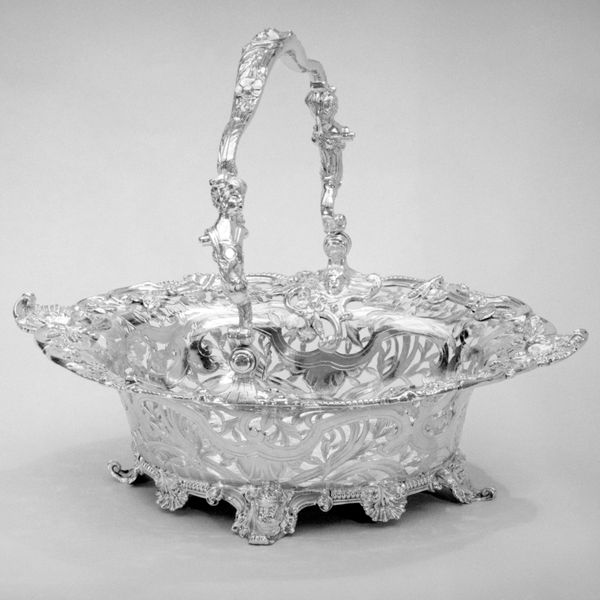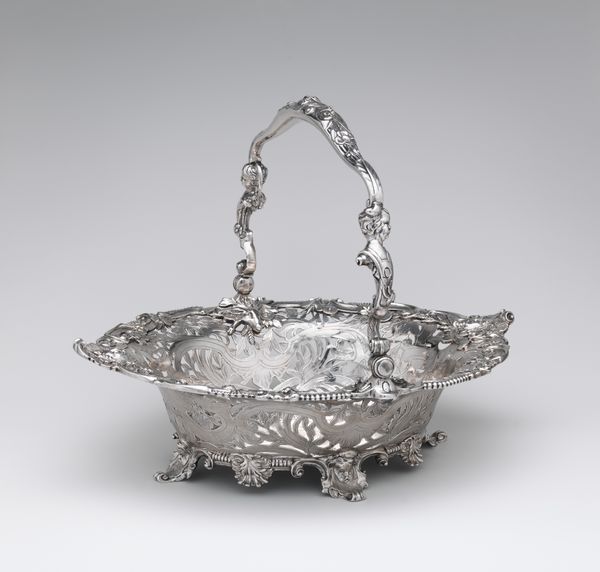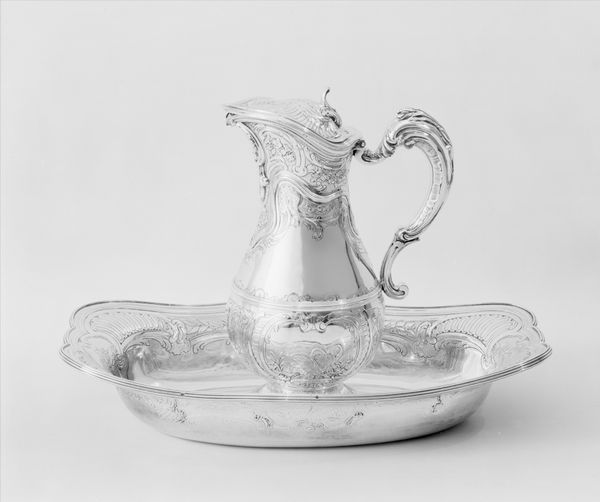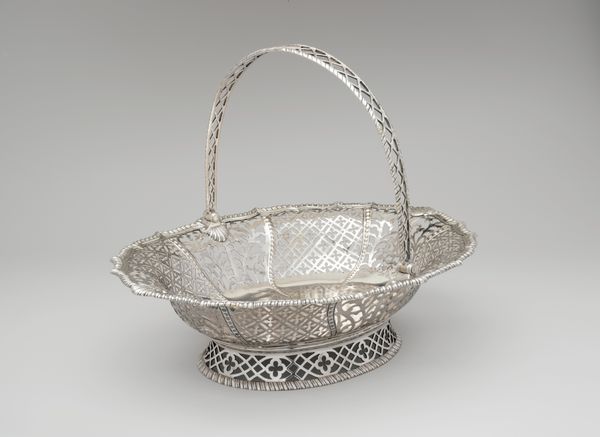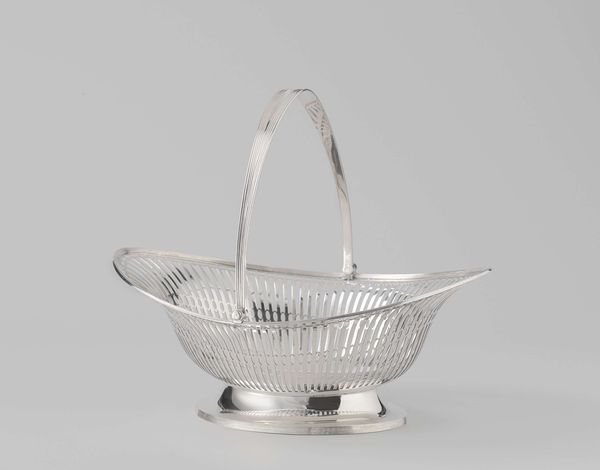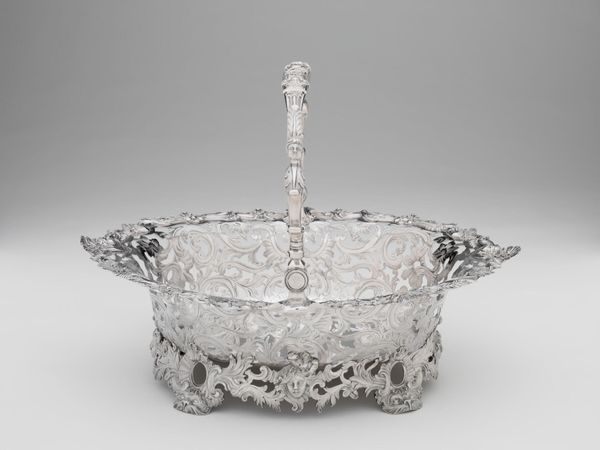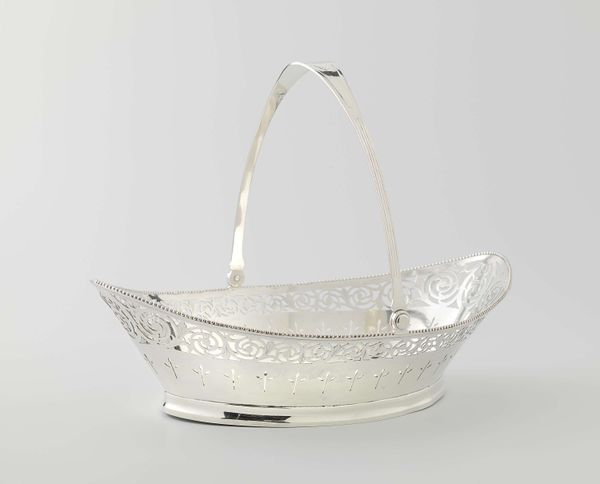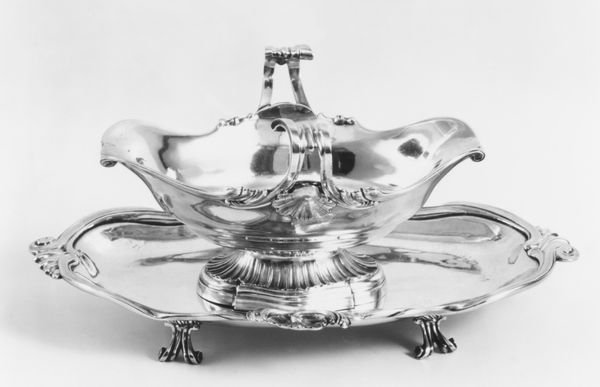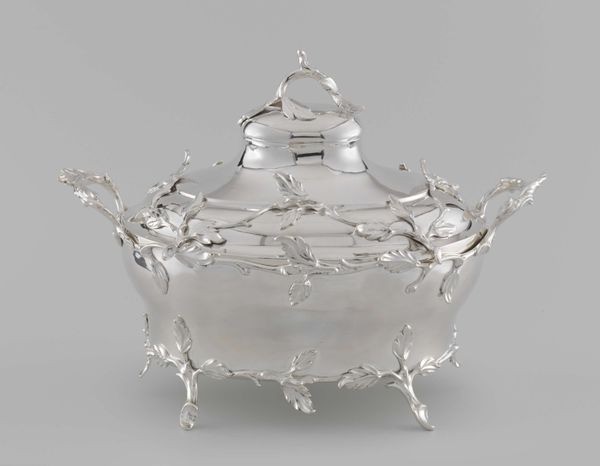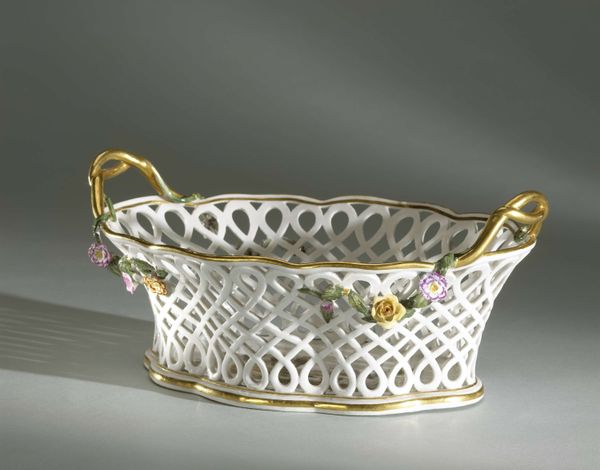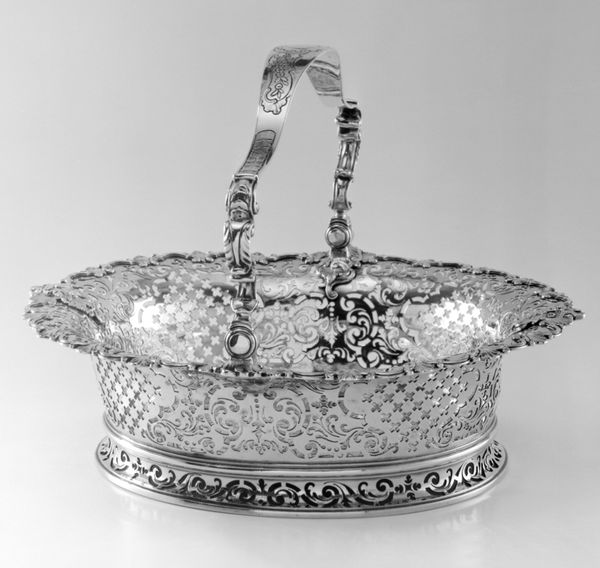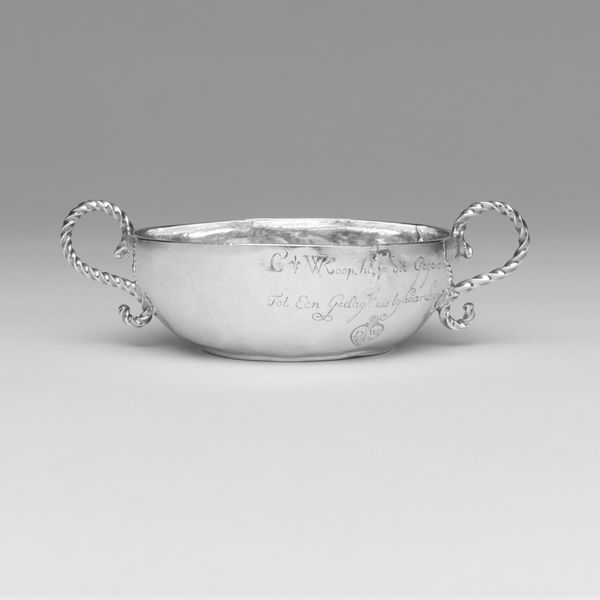
silver, metal, sculpture
#
silver
#
baroque
#
metal
#
form
#
sculpture
#
decorative-art
#
rococo
Dimensions: Overall: 11 1/2 × 11 3/4 × 15 in. (29.2 × 29.8 × 38.1 cm)
Copyright: Public Domain
Editor: This exquisite object is William Cripps’s "Cake Basket," crafted between 1746 and 1747. The delicate silverwork is breathtaking! How does something like this come to be considered art rather than craft? Curator: That's a crucial question! Think about the social context. During the 18th century, silver objects like this signaled wealth and refined taste, becoming important status symbols. Silver like this demonstrated participation in larger systems of political authority. Who owned this basket, and what role did it play in their household’s presentation of itself? Editor: That’s a great point. I hadn't considered it in terms of display. It’s so intricately made; who would have even seen it? Curator: Precisely. Consider the setting for its display and use: wealthy households keen to flaunt their sophistication and social standing through elaborate tableware. Did the artist enjoy any form of upward mobility or financial security as a result of this work? The value lay as much in the material and the labor as it did the statement the piece made about its owners. Editor: It is definitely a reflection of those values. This makes me wonder about how museums influence what we consider to be art now. Curator: Absolutely. Museums and galleries actively shape our perceptions. By placing an object like this in a museum, we imbue it with artistic value, separating it from its original functional and social context and assigning new meanings related to aesthetics and history. What do we learn, then, about shifting definitions of "art" itself when seeing it here? Editor: I see what you mean! It prompts a reflection on taste, class, and how institutions legitimize what gets remembered. Curator: Exactly. Analyzing art objects involves examining how social and institutional frameworks shape not only their creation but also their lasting cultural relevance. Editor: Thanks! It’s fascinating to view something like a cake basket as more than just a pretty object, but as part of a broader societal dialogue about power and taste.
Comments
No comments
Be the first to comment and join the conversation on the ultimate creative platform.
